Papers by Hugh Tuller
Blood Protein Analysis ………………………………………………………………….. 6 Stutiča Execution Site Materials and Methods... more Blood Protein Analysis ………………………………………………………………….. 6 Stutiča Execution Site Materials and Methods ………………………………….. 6 Immunological Background and Analysis ……..………………………………... 9 Stutiča CIEP Analysis Results …………………….…………………………… 12 Volatile Fatty Acid Analysis …………………………………………………………... 15 Duz Cemetery Materials and Methods ………………………………………… 15 Knin Mass Grave Materials and Methods ……………………………………... 19 Volatile Fatty Acid Background and Analysis…………………………………. 20 Duz VFA Analysis Results …………………………………..………………… 23 Knin VFA Analysis Results …………………………..………………………... 24

Forensic Sciences Research, 2022
As forensic humanitarian and forensic human rights anthropology has continued to evolve, an ongoi... more As forensic humanitarian and forensic human rights anthropology has continued to evolve, an ongoing concern in the field is meaningful engagement with survivors and the imperative to do no harm. For forensic anthropologists attempting to engage in grassroots forensic intervention, unaffiliated with an international investigation, means for effectively accessing and engaging communities has not been widely discussed. Here, forensic anthropologists draw on multiple, cross-cultural contexts to discuss methods and techniques for introducing forensic partnerships to communities. To do this, the scientist must consider their positionality as well as that of the stakeholders, develop effective local relationships, and consider a community-grounded approach. This paper argues that drawing on broader cultural anthropological training, ultimately informs one's ability to gain entry into at-risk and vulnerable communities while minimizing harm. To illustrate this point, examples are drawn from Canada, Uganda, Cyprus, and Somaliland.
Forensic Science International, 2017
Highlights Challenges and considerations in managing complex forensic investigations. Dealing... more Highlights Challenges and considerations in managing complex forensic investigations. Dealing with the dead and missing from mass violence and disaster contexts. Addressing cultural beliefs of the affected society regarding the dead and missing. Forensic investigations within prescribed political, economic and time constraints. Large-scale vs. small-scale forensic investigations.
A Companion to Forensic Anthropology, 2012
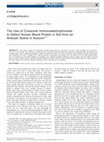
Journal of Forensic Sciences, 2012
This study examines the survivability of human blood proteins in soils from a year and a half old... more This study examines the survivability of human blood proteins in soils from a year and a half old ambush scene in Kosovo. A total of 72 soil samples were collected, a number of which were directly associated with bone fragments or bullet projectiles. The samples were examined using crossover immunoelectrophoresis (CIEP) to determine the presence of blood protein and species affiliation. Human blood proteins were identified in 44 of the 72 samples (61%) with the majority of the positive observations (29 of 44) found 0.0-4.5 cm below ground surface (65%). Chi-squared and two-sample difference of proportions tests confirmed significant differences between samples with and without associated physical evidence and the presence and depth of human blood proteins. While DNA has largely replaced immunological analysis in forensic analyses, our results suggest that in particular situations, CIEP may still be a valuable tool in criminology.
Journal of Forensic Sciences, 2012

Forensic Science International
The renowned work of Clyde Snow and the development of the Equipo Argentino de Anthropología Fore... more The renowned work of Clyde Snow and the development of the Equipo Argentino de Anthropología Forense (EAAF) team has inspired the use of forensic anthropological and archaeological skills in human rights interventions around the world. Whether for medico-legal intervention and acquisition of evidence or humanitarian repatriation and identification of human remains, forensic expertise has garnered attention in the global arena. Arguably fulfilling evidentiary and psychosocial needs, there has been growing interest in this post-conflict redress. However, as part of the critique of these interventions, scholars and practitioners have pointed out-primarily in medico-legal investigations-a lack of sensitization of local communities regarding forensic work, increasing the potential for re-traumatization, unrealistic expectations, or an unintentional increase in political tensions. Research regarding forensic intervention and human remains have permeated social sciences, peace and conflict studies, and science and technology studies, revealing both intentional and unintentional impacts of forensic sciences after mass violence. In an effort to mitigate negative impacts of medico-legal or humanitarian interventions, the research described here sought to sensitize communities in Uganda about forensic methods. Findings from this study suggest that sensitization is necessary and desired, and that a multi-step approach can assist in managing expectations.
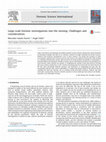
A B S T R A C T Large-scale forensic investigations may follow episodes of mass violence and disa... more A B S T R A C T Large-scale forensic investigations may follow episodes of mass violence and disasters where hundreds or thousands of people have died or are missing. A number of unique challenges for forensic science, different from domestic investigations, arise in these contexts. The setting and situation of these investigations regularly force forensic scientists into practices not regularly encountered while working in a standard criminal justice system. These practices can entail activities not specific to a practitioner's particular field or necessarily be scientific in nature, but are still needed in order for the investigation to move forward. These activities can include (1) establishing the number of and who exactly is missing after mass violence and disaster, (2) the creation of working protocols to deal with the scale of the loss of life that often overwhelm domestic practices and institutions, (3) negotiating the form that the investigation will take with various stakeholders, (4) addressing cultural beliefs of the affected society regarding the dead and missing, and (5) working within prescribed economic, political, and time constraints, among others. Forensic scientific responses to these challenges have proven to be flexible, innovative, and continually evolving.
Journal of Forensic Sciences, 2011
This case study illustrates the use of the date function on an automatic wristwatch to help ident... more This case study illustrates the use of the date function on an automatic wristwatch to help identify a Vietnam War helicopter crash site. The location of a crash incident can sometimes be uncertain because of inadequate or inaccurate wartime records and the passage of time. Artifacts recovered from a prospective crash scene are regularly used to correlate the loss incident. In this case study, a recovered automatic watch displayed a date 2 days later than the reported loss incident. Although the date conflicts with the aircraft crash incident report, it is observed that a fully wound automatic watch continues to work for c. 2 days after movement of the watch ceases. Thus, the watch's date in fact correlates with the aircraft crash incident report. It is noted that automatic watches may also be used to date scenes of crime.
Journal of Forensic Sciences, 2012
This study examines the survivability of human blood proteins in soils from a year and a half old... more This study examines the survivability of human blood proteins in soils from a year and a half old ambush scene in Kosovo.
Blackwell Publishing, 2012
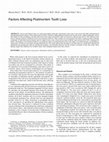
Journal of Forensic Sciences, 2004
Unassociated human bones are a particular problem during the exhumation of mass graves and a fact... more Unassociated human bones are a particular problem during the exhumation of mass graves and a factor that limits anthropological and paleopathological analyses from archaeological contexts. Extensive anthropological literature has focused on the complex taphonomic factors that influences bone assemblages, but little attention has been paid to postmortem tooth loss and factors affecting this process. The following study focuses upon the influence of different factors on postmortem tooth loss. Three samples were investigated in the study: a medieval church cemetery containing 110 individual skeletal remains, and two samples from a series of mass graves made within the same time period in 1999, containing 402 bodies. The frequency of postmortem tooth loss was analyzed relative to postmortem interval for each sample, excavation methods, age distribution, and presence of bone loss associated with periodontal disease. Our results indicate that the degree of alveolar bone loss significantly affected both antemortem and postmortem tooth loss and that the frequency of postmortem tooth loss has the strongest correlation to time since death. These findings suggest that additional care should be taken when exhuming remains from older contexts.
Forensic Science International, 2006
Mass graves are a complex and confusing mix of bodies, body parts, soils, artifacts, and other fe... more Mass graves are a complex and confusing mix of bodies, body parts, soils, artifacts, and other feature evidence. Forensic investigations of these complex crime scenes should attempt to maximize the collection of evidence, which includes the mortal remains, in their best possible condition as they were deposited within the graves. Two standard methods of mass grave excavation were examined with the aim of identifying the better approach.
Edited Book by Hugh Tuller

The work of finding and identifying missing persons is complex and requires the expertise of many... more The work of finding and identifying missing persons is complex and requires the expertise of many
people, such as historians hunting through archives, biological anthropologists reconstructing skeletons,
and psychologists preparing investigators to interview families of the disappeared. Uniting the voices of
22 experts from around the world, Derek Congram’s collection of original papers centres its attention
on those who are engaged in the location, identification, and repatriation of missing persons. The
contributors to this timely volume represent multiple disciplines and various fields, including academia,
government, and civil service, but are connected by a shared conviction that accounting for the missing
is vital for a just society.
The chapters concentrate on victims of physical or structural violence, including armed conflict,
repressive regimes, criminal behaviour, and racist and colonial policies towards Indigenous persons
and minority populations. Some contexts are familiar — morgues, mass graves, and battlefields — while
others are surprising, such as schoolyards and a museum in Canada. Although the circumstances of
the disappearances vary greatly, Missing Persons illustrates the connections between these disparate
contexts. Multidisciplinary in scope, this edited collection is a valuable comparative resource for
students, academics, and practitioners in forensic anthropology, anthropological/archaeological ethics,
forensic psychology, criminal justice, and human rights.
Conference Presentations by Hugh Tuller
HHRRC , 2019
To assist Ugandan reconciliation and conflict stabilization programs after 30 years of war, a for... more To assist Ugandan reconciliation and conflict stabilization programs after 30 years of war, a forensic science training seminar aimed at Ugandan forensic practitioners, government officials, and NGOs was conducted. The aim of the seminar was to educate participants on best practices of large-scale forensic investigations used in post-conflict contexts with the intent of opening further dialogue for future communication, training, and assistance.

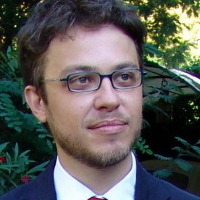








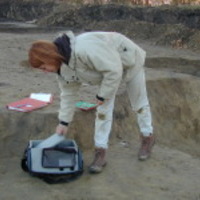
Uploads
Papers by Hugh Tuller
Edited Book by Hugh Tuller
people, such as historians hunting through archives, biological anthropologists reconstructing skeletons,
and psychologists preparing investigators to interview families of the disappeared. Uniting the voices of
22 experts from around the world, Derek Congram’s collection of original papers centres its attention
on those who are engaged in the location, identification, and repatriation of missing persons. The
contributors to this timely volume represent multiple disciplines and various fields, including academia,
government, and civil service, but are connected by a shared conviction that accounting for the missing
is vital for a just society.
The chapters concentrate on victims of physical or structural violence, including armed conflict,
repressive regimes, criminal behaviour, and racist and colonial policies towards Indigenous persons
and minority populations. Some contexts are familiar — morgues, mass graves, and battlefields — while
others are surprising, such as schoolyards and a museum in Canada. Although the circumstances of
the disappearances vary greatly, Missing Persons illustrates the connections between these disparate
contexts. Multidisciplinary in scope, this edited collection is a valuable comparative resource for
students, academics, and practitioners in forensic anthropology, anthropological/archaeological ethics,
forensic psychology, criminal justice, and human rights.
Conference Presentations by Hugh Tuller
people, such as historians hunting through archives, biological anthropologists reconstructing skeletons,
and psychologists preparing investigators to interview families of the disappeared. Uniting the voices of
22 experts from around the world, Derek Congram’s collection of original papers centres its attention
on those who are engaged in the location, identification, and repatriation of missing persons. The
contributors to this timely volume represent multiple disciplines and various fields, including academia,
government, and civil service, but are connected by a shared conviction that accounting for the missing
is vital for a just society.
The chapters concentrate on victims of physical or structural violence, including armed conflict,
repressive regimes, criminal behaviour, and racist and colonial policies towards Indigenous persons
and minority populations. Some contexts are familiar — morgues, mass graves, and battlefields — while
others are surprising, such as schoolyards and a museum in Canada. Although the circumstances of
the disappearances vary greatly, Missing Persons illustrates the connections between these disparate
contexts. Multidisciplinary in scope, this edited collection is a valuable comparative resource for
students, academics, and practitioners in forensic anthropology, anthropological/archaeological ethics,
forensic psychology, criminal justice, and human rights.